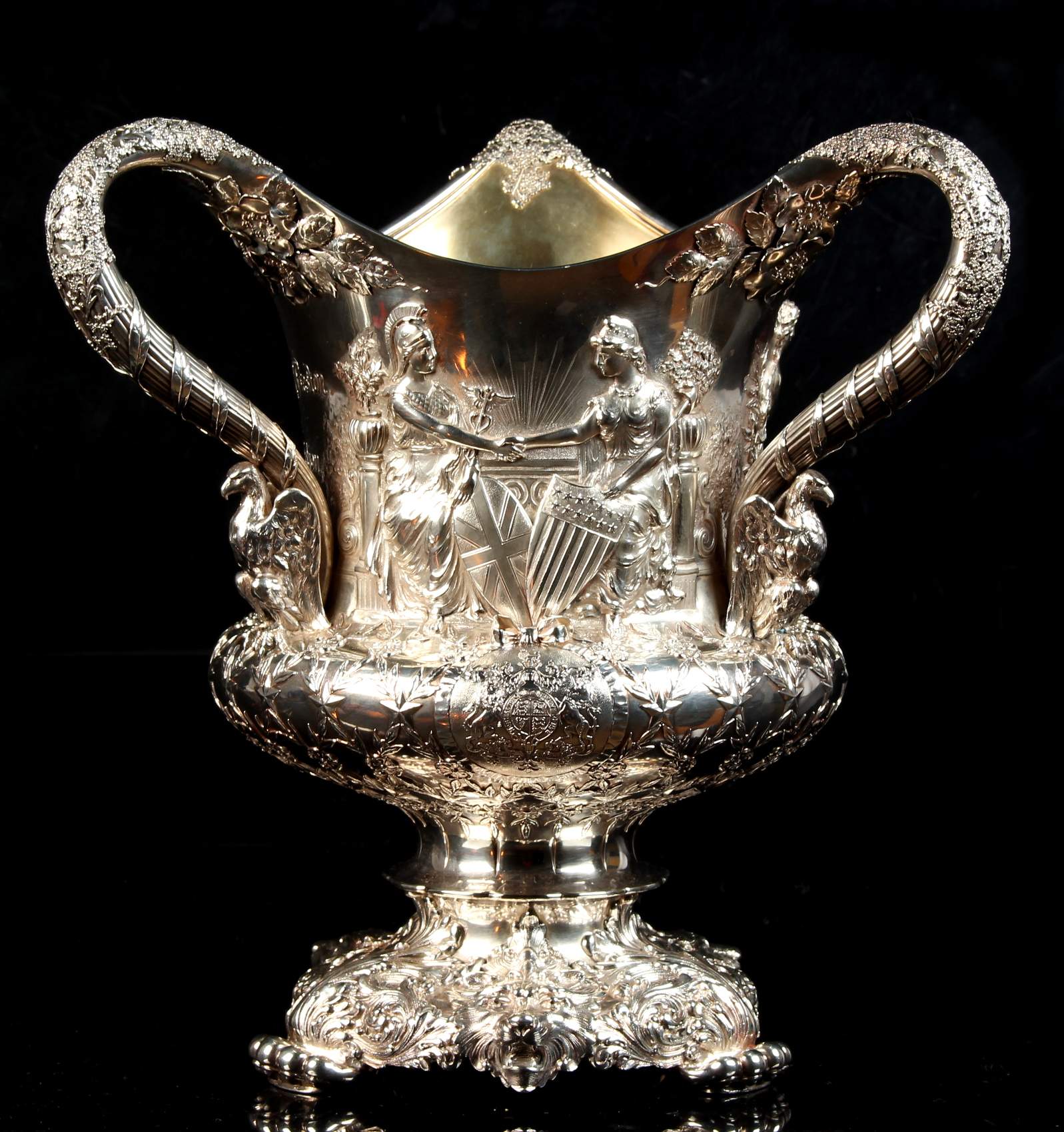SHAFTSBURY, DORSET, ENGLAND — Semley Auctioneers offered a rare Tiffany & Co. silver three-handled trophy cup at auction on April 15 that it believed was certain to pique Anglo-American Panama Canal historical interest. And the auction house called it right. The circa 1900 piece, called the Hay-Pauncefote Treaty Cup, consigned by the property of a lady of title, easily outperformed its $25/37,000 presale estimate to bring $91,000, including premium. “We are delighted!” enthused Simon Pearce of Semley Auctioneers.
“We bought it,” Annamarie Sandecki, corporate archivist for Tiffany & Co., told Antiques and The Arts Weekly “We are out there looking all the time and we almost always actively bid on exceptional objects like this.” Sandecki added that she did not have any more information to share on the cup “until I get it in my hands.” However, research into the manufacturing ledger books prior to the purchase revealed a unique set of numbers that indicated that it entered the company’s inventory on March 31, 1900. Tiffany, she said, seeks items that tell the story of American history, and that “every president since Lincoln has worked with us.”
How did the cup come to her attention? “Search engine,” she said with a laugh. “I hate to spoil the mystery for you but there are six of us working 3-4 hours a day to find such material.”
Ultimately, she said, the cup may go on display in one of the company’s stores or be available for loan to museum exhibitions.
The auction house provided some history of the cup. In the last years of the Nineteenth Century, American foreign policy officials began questioning the validity of the Clayton-Bulwer Treaty of 1850, whereby the United States and Great Britain agreed not to take independent action in creating a canal in Central America linking the Atlantic and Pacific oceans. Negotiations ensued between John Hay, secretary of state of the United States, and Lord Julian Pauncefote, British ambassador to Washington, culminating in the signing of the first Hay-Pauncefote Treaty on February 5, 1900, when this trophy was presented.
The treaty provided for joint British and American protection for any trans-Panama canal, but allowed for the United States to build and operate such a canal on its own. The US Senate was dissatisfied with the wording and amended the treaty to explicitly supersede the Clayton-Bulwer Treaty. Britain objected and, following further negotiations, the second Hay-Pauncefote Treaty was signed on November 18, 1901. The key points of this second treaty were that the United States would be authorized to construct and manage a Central American canal, and would guarantee the neutrality of the canal, and, to this end, build fortifications if necessary, and that this canal would always be open to all nations, with fair and equal rates of passage. The Panama Canal was the result.
Inscribed in low relief “To His Excellency / The Rt. Hon. Lord Pauncefote of Preston / G.C.B. G.C.M.G. / as a token of esteem and affection / from / John Hay / 1900,” the cup’s second side is chased with the seated figures of Britannia and Columbia shaking hands above the royal coat-of-arms. Its third side depicts seated figures of the goddesses Demeter and Tyche (Greek) or Ceres and Fortuna (Roman) exchanging gifts of corn, above the Great Seal of the United States. The cup’s three handles are wrapped in fruiting vines with perched eagles below, the base has lion masks and scrolling leaves. Stamped with the 1891-1902 mark “Tiffany & Co. / 14309 Makers 9628 / Sterling Silver / 925-1000 / T / 10 Pints’,” the cup stands 12.8 inches high, weighs approximately 3,220 grams and came with its original Tiffany & Co. fitted oak case.
The price reported was converted from British pounds to US dollars at press time. For information, +44 1747 855122 or www.semleyauctioneers.com.





